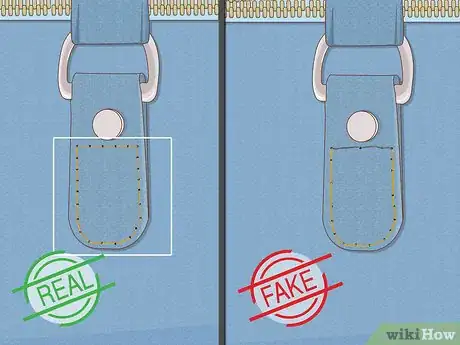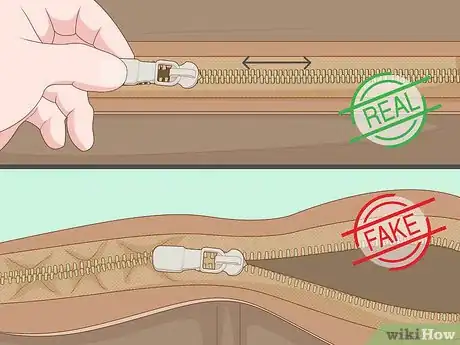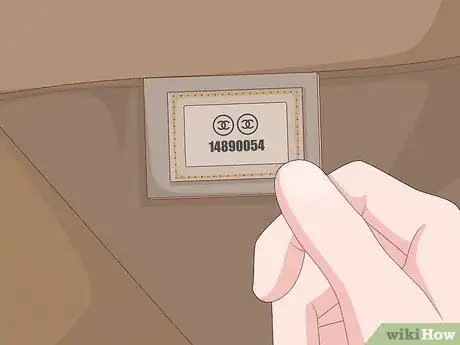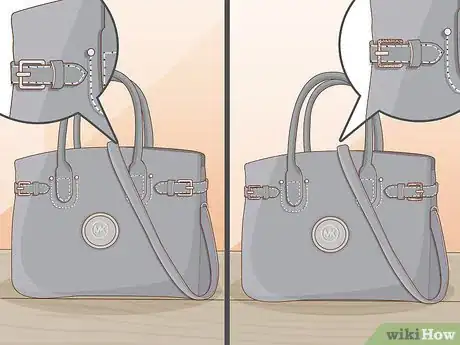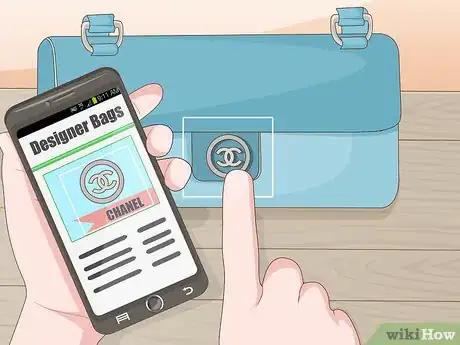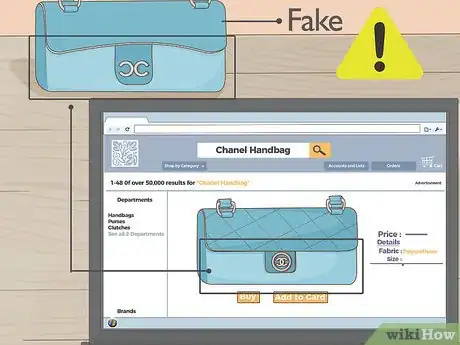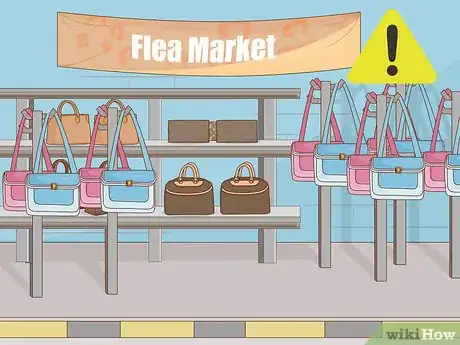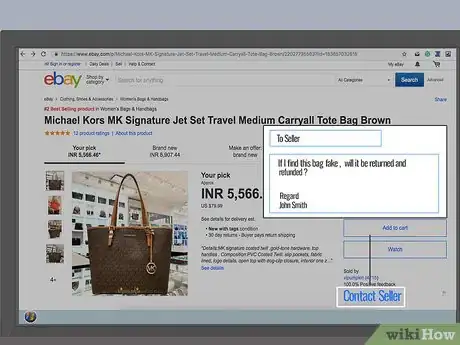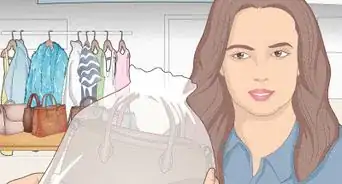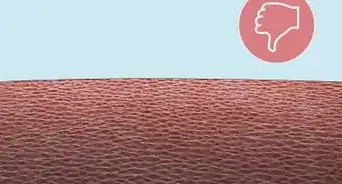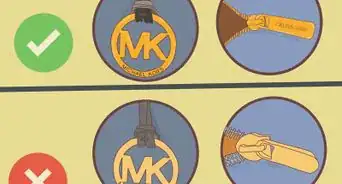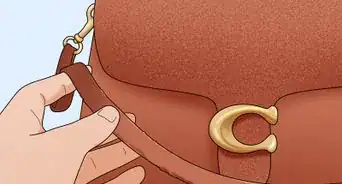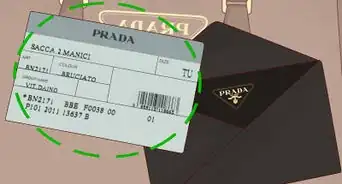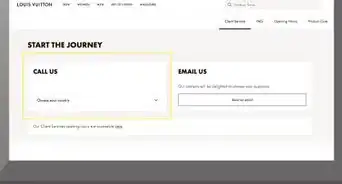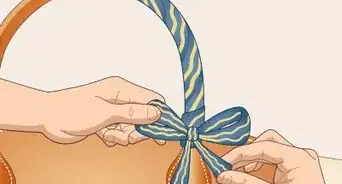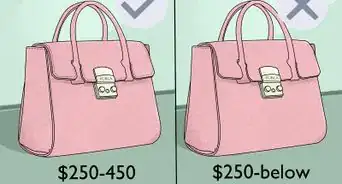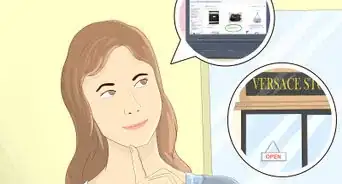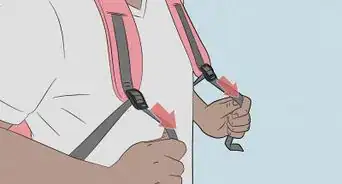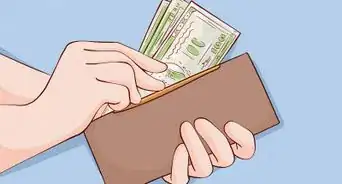This article was co-authored by Kalee Hewlett and by wikiHow staff writer, Caroline Heiderscheit. Kalee Hewlett is a Celebrity Stylist & Confidence Coach with almost two decades of experience helping clients build confidence and ‘dress for success.' She works with her clients to transform their sense of self 'from the inside out’ by merging her expertise in image consulting with Neuro-Linguistic Programming. Kalee’s work is rooted in science, style, and the understanding that ‘identity is destiny'. She uses her own methodology and Style To Success Strategy to create positive identity shifts. Kalee is a fashion TV host and appears regularly on QVC UK sharing her fashion expertise. She also was appointed as the head judge and host of Fashion One Network’s 6-part TV show 'Design Genius.’
There are 7 references cited in this article, which can be found at the bottom of the page.
wikiHow marks an article as reader-approved once it receives enough positive feedback. In this case, 100% of readers who voted found the article helpful, earning it our reader-approved status.
This article has been viewed 1,077,264 times.
Online shopping is becoming more common every single day, so it makes sense that knockoffs and scams are, too. So how can you be sure that that gorgeous, designer purse is the real deal—and not just a cheap fake? Don't stress, there are actually super easily identifiable traits that real bags have in common (like quality leather, clasps, zippers, and correct logos). Read through the expert tips included below and you'll have all the intel you need.
Things You Should Know
- Look for heavy leather, smooth zippers, and pristine lining are all to be expected. In general, designer purses will be of the highest quality.
- Check for a bag's code. A lot of the time, purses will also have a unique code printed on the purse, which can be checked online with code checkers.
- Buy firsthand from a seller, because that's the best way to avoid getting scammed.
Steps
Inspecting the Quality of the Bag
-
1Look out for sloppy, loose, or jagged stitching. Slanted and uneven stitching is a sign of a poorly-made, fake bag. When you’re looking at a designer bag, the stitching will always be high quality. For the designer to keep a pristine reputation, they have to consistently sell quality products.[1]
- Make sure to check the stitching on the inside of the bag too. Some fakes hide their sloppy work inside.[2]
-
2Inspect the purse's leather and lining. Smell the bag you're considering purchasing—if it's made of leather, it should smell like leather. Then, give it a quick lift; leather bags will be pretty heavy. If you notice that the bag is very light and flimsy, then there's a good chance that it's fake. A real designer bag will be lined, often with polyester, nylon, or cotton material. For reference, lining is sewn on the inside of the bag's outer shell.[3]
- If the bag's lining is sloppy, bumpy, or loose, then there's a good chance that the bag you're considering is a fake.
Advertisement -
3Check the functionality and quality of the zipper. The zippers should zip very smoothly, and feel heavy and of high-quality. Zip your bag's zipper all the way up as a test. If the pull falls off quickly, the bag's probably fake. Or, if the zipper feels light and flimsy, that’s a bad sign too.[4]
- Usually, the underside of the zipper pull will have a logo. Many handbag manufacturers use the same high-quality zipper manufacturer on all of their bags. So when in doubt, check for this as well!
- Balenciaga, for instance, typically uses zippers with "Lampo" printed on the back.
Checking for Designer Details
-
1Examine the bag for brand tags, authenticity labels, and serial numbers. Check to see if your bag has an inside tag with a brand name and a serial number on it (because almost all authentic purses will). The inside tags should be hand-stitched or stamped into the leather. In some cases, designers also include authenticity labels on the outside of the bag. Chanel actually comes with a physical card separate of the bag, which has a 6-number serial code.[5]
- Some fake bags may have authenticity tags, but the text will be in a different font and size than the original.[6]
- These numbers are sort of like a passport or license—they give one bag a unique identity, making it way harder to replicate. If your bag is missing one, that’s a red flag!
- A lot of the time, these codes can be searched online with code checkers. This is a great way to tell if your bag is fake, but not an effective way to be sure that it's real (because even though it's hard, codes can be replicated by scammers).
-
2Look for designers' signature hardware (it's usually consistent in color and finish). Check the clasps, buckles, and other hardware on your bag—it should all be made of the same metal, and that metal should have the same color and finish (the exception to this is Chloé bags, which might use a variety). The hardware should be heavy, feel smooth, and be of high-quality.[7]
- Real designer bags’ hardware is metal, while many fakes use plastic. Unlike plastic, metal hardware will absorb heat or cold. So quickly feel your bag’s hardware—if it’s been sitting out in the sunshine, is it hot? If it’s been in an air-conditioned room, is it a little chillier?[8]
-
3Check that the bag's logo looks exactly the same as the designer's logo. Fake manufacturers might spell the designer’s name slightly differently, such as Carter instead of Cartier. Or they might use different letters in the bag charm. Take a close look at your logo and google standard logos for the designer, then compare. If you notice a difference, then this means you’re buying a legal knockoff—but a knockoff nonetheless.[9]
- For example, fake Michael Kors bags often feature an "M" charm instead of "MK" hanging from the handle.
- Meanwhile, fake Yves Saint Laurent bags often have an "SL" charm instead of "YSL."
-
4Compare the bag to a picture of the same bag on the designer's website. Look up a picture of a genuine designer bag using the product’s name or code and compare it to the bag you're inspecting. Look for slight variations in color and design. If you've already purchased the bag and are trying to determine if it's fake, you can bring it into a designer store and compare it to the ones on display. Use these brand-specific guides for even more help:[10]
- Checking Louis Vuitton purses.
- Checking Coach purses.
- Checking Michael Kors purses.
- Checking Furla purses.
- Checking Prada purses.
- Checking Versace purses.
- Checking Vera Bradley purses.
- Checking Ralph Lauren purses.
Shopping for a Designer Bag
-
1Go to a brand-name store for designer bags. Luxury department stores are always going to sell genuine items, it’ll be no question.[11] If you have specific questions about the bag’s pedigree and quality, the staff should be knowledgeable.[12] And while the bags in these stores may be expensive, you're paying for lifelong quality.
- If you want extra security, ask if there are any certificates of authenticity accompanying the bag. If you have plans to sell it second-hand down the line, this'll also help you prove that you're not a scammer to future buyers!
-
2Avoid flea markets and street vendors. Designer labels don't authorize street vendors to sell designer bags on the street, so those bags are all knock-offs and fakes. It would be a rare find for somebody to sell their old designer bag at a flea market, and they're far more likely to be selling a fake.
- Know all you can about designer bags if you're purchasing from estate sales, thrift stores, or online auction sites.
-
3Be realistic about the price of a real designer bag. Designer bags cost a lot of money because they are well-crafted status symbols. If the price is too good to be true, then the bag is usually fake. The exception to this, again, is an authentic second-hand bag. Note that if you're okay with buying a legal knock-off, you're not paying for the status or quality. Therefore, you shouldn't accept a high price.[13]
- Ask the vendor if the bag is real, a copy, or a fake. Sellers who avoid answering questions have something to hide.[14]
-
4Get a refund if you bought the bag on eBay or Facebook Marketplace. If you find that you've purchased a fake designer bag online or from an unofficial vendor, there's not a lot you can do the seller for a refund. However, if you buy from a second-hand site with a scam protection policy (like eBay and Facebook Marketplace), you may be able to petition for a refund. Reach out to the seller first, and if they refuse, contact the site.[15]
Community Q&A
-
QuestionIs it true that real bags don't have plastic packing around the handles?
 Community AnswerYes, designer bags almost never have this kind of wrapping around them. There may be an exception for bags ordered online, but the plastic still shouldn't show up in the photographs.
Community AnswerYes, designer bags almost never have this kind of wrapping around them. There may be an exception for bags ordered online, but the plastic still shouldn't show up in the photographs. -
QuestionDo outlet stores ever sell fake designer bags?
 Community AnswerNo, outlet stores that are officially connected with a brand will not sell fake items.
Community AnswerNo, outlet stores that are officially connected with a brand will not sell fake items. -
QuestionDoes a real Michael Kors handbag have his whole name printed in various places on the inside and outside?
 Community AnswerThe label should either say "MICHAEL Michael Kors" or just "Michael Kors," and most genuine designs have the MK logo on a hanging metal tag. The interior and exterior more commonly feature the MK logo as part of a repeated pattern, not the full name.
Community AnswerThe label should either say "MICHAEL Michael Kors" or just "Michael Kors," and most genuine designs have the MK logo on a hanging metal tag. The interior and exterior more commonly feature the MK logo as part of a repeated pattern, not the full name.
Warnings
- If you're planning on selling bags, be aware of the legal implications. It's fine to sell knock-offs if you clearly say they're knock-offs, but it's illegal to sell fake bags claiming to be the real thing.⧼thumbs_response⧽
References
- ↑ https://www.elle.com/uk/fashion/what-to-wear/articles/a34987/how-to-spot-fake-designer-handbag/
- ↑ https://www.elle.com/uk/fashion/what-to-wear/articles/a34987/how-to-spot-fake-designer-handbag/
- ↑ Kalee Hewlett. Image Consultant. Expert Interview. 23 April 2019.
- ↑ https://stylecaster.com/fake-designer-bags/
- ↑ https://www.racked.com/2017/1/2/14149614/fake-handbags
- ↑ https://www.racked.com/2017/1/2/14149614/fake-handbags
- ↑ https://www.racked.com/2017/1/2/14149614/fake-handbags
- ↑ https://www.racked.com/2017/1/2/14149614/fake-handbags
- ↑ https://www.elle.com/uk/fashion/what-to-wear/articles/a34987/how-to-spot-fake-designer-handbag/
- ↑ https://www.elle.com/uk/fashion/what-to-wear/articles/a34987/how-to-spot-fake-designer-handbag/
- ↑ Kalee Hewlett. Image Consultant. Expert Interview. 23 April 2019.
- ↑ https://www.forbes.com/sites/deborahljacobs/2013/01/01/how-to-spot-a-fake-designer-handbag/#4926e429671f
- ↑ http://www.wisegeek.com/how-do-i-recognize-fake-designer-accessories.htm
- ↑ http://www.wisegeek.com/how-do-i-recognize-fake-designer-accessories.htm
- ↑ https://www.thebalancesmb.com/counterfeit-item-through-ebay-1140132
About This Article
If you have your eye on a designer bag but aren’t sure if it’s genuine, you’ll need to keep an eye out for details like poor craftsmanship or differences in design. Inspect your bag for signs of poor quality, such as sloppy stitching or flimsy, artificial materials. You might also notice that the zipper breaks easily or doesn’t work smoothly. In addition to looking at the quality of the bag, check for tell-tale design details, like minor differences between the bag’s logo and the official designer logo. Real designer bags often have authenticity labels or tags with serial numbers stitched or stamped into them, so look for those as well. You can also check for design differences by comparing the bag to a picture of the same model on the designer’s website. Read on for more advice, including how to buy a designer bag from a reputable dealer!
